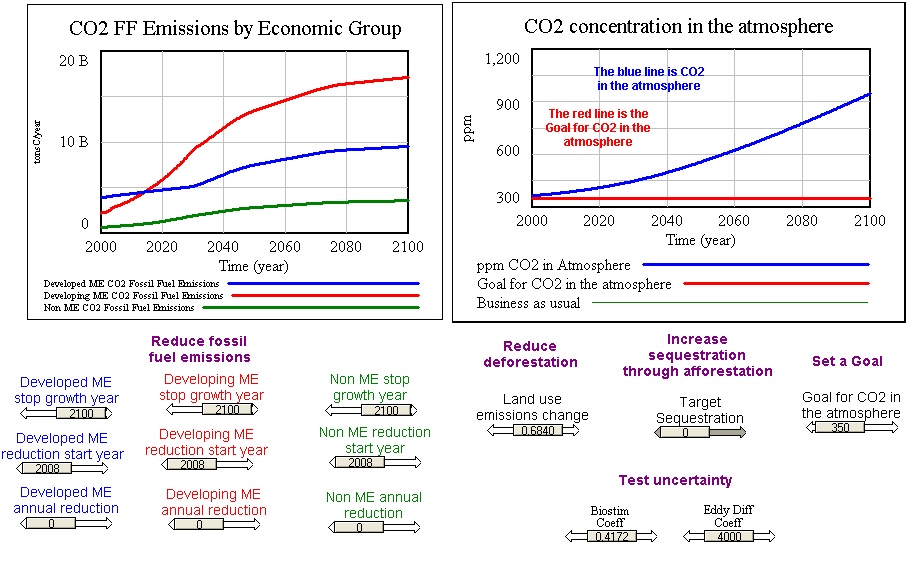Teaching in Germany from My Desk in the States
By
Andrew P. Jones
October 23, 2008

Taught climate dynamics in Germany using C-ROADS (formerly called Pangaea) today from my desk in North Carolina, USA.
Using GoToMeeting to send the image of the model on my computer screen over to Germany, 20 modeling students of Professor Martin Welp at the University of Applied Sciences at Eberswalde spent 45 minutes choosing scenarios over the phone and watching the results in C-ROADS (interface above).
I was surprised how well such distance learning can work — based on their responses, they seemed to really see what it is going to take to stabilize the climate.
The Professor wrote, “I believe this can be a decision support tool that really can be of help in international negotiations.”
Let’s make him correct!
More comments from students are below.
I wanted to thank you for providing us with the opportunity to see how a well developed model can influence not only the public, but also students involved in mitigating climate change. One aspect that I really like about this model, was the fact that it is an open-source model. I think this is really unusual, but unusual in a good way!
Thanks for your presentation, it was very helpful to see instantly what our decisions will do to the climate. I would recommend you to do this kind of presentation with other institutions, especially with our political decision makers. Even though our connection via phone and internet could have been better (a bit slow) but even so we greatly enjoyed it. If at all possible, it would be intersting to see what happens to our climate if you’d include the global dimming effect and that at certain temperatures the tripping switches (permafrost etc.) kick in. Probably scary but possibly a real effect that should not easily be disregarded. However, I understand if you leave the model as it is. It’s a good model to show the necessessity of immediate action and how vast our action must or should be.

